May 28-June 3, 2023
Here comes the sun

Hooray for the first week this year that has been sunny and warm every day! Local lakes are warming up, with countless dragonflies and damselflies, and lines of baby ducks following along behind their mothers.
Week in Review
It's been a sunny, warm week with many active animals, including the first baby birds and their busy parents. And despite the dry heat there are still many flowers around the Methow Valley.
Some of the driest, gravelly areas on the valley floor are dotted with clusters of delightful white daisy-like flowers of the threadleaf fleabane. These prolific flowers seem to be irresistible to pollinators and it's astonishing how many types of native insects you can find buzzing around them.
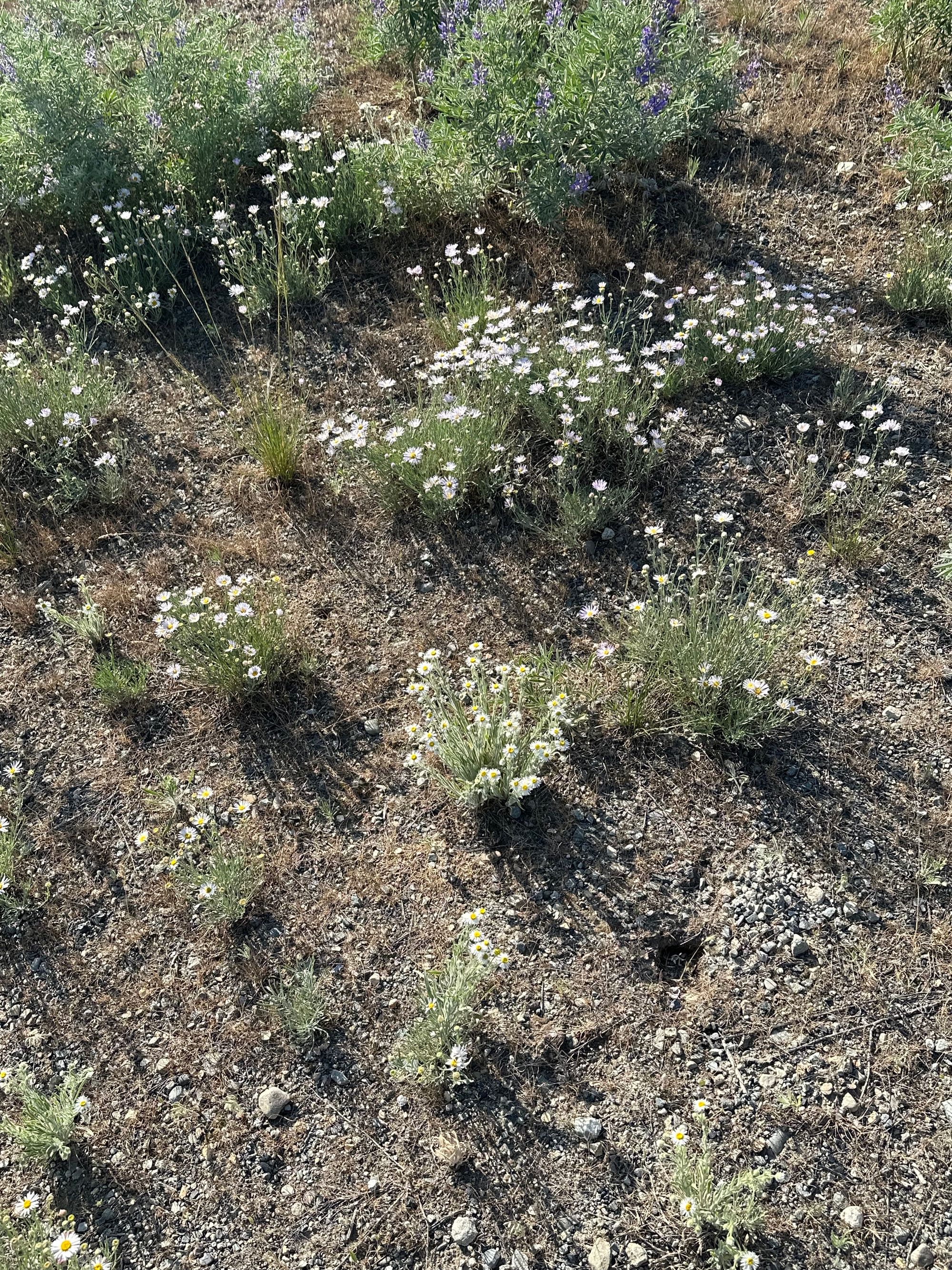

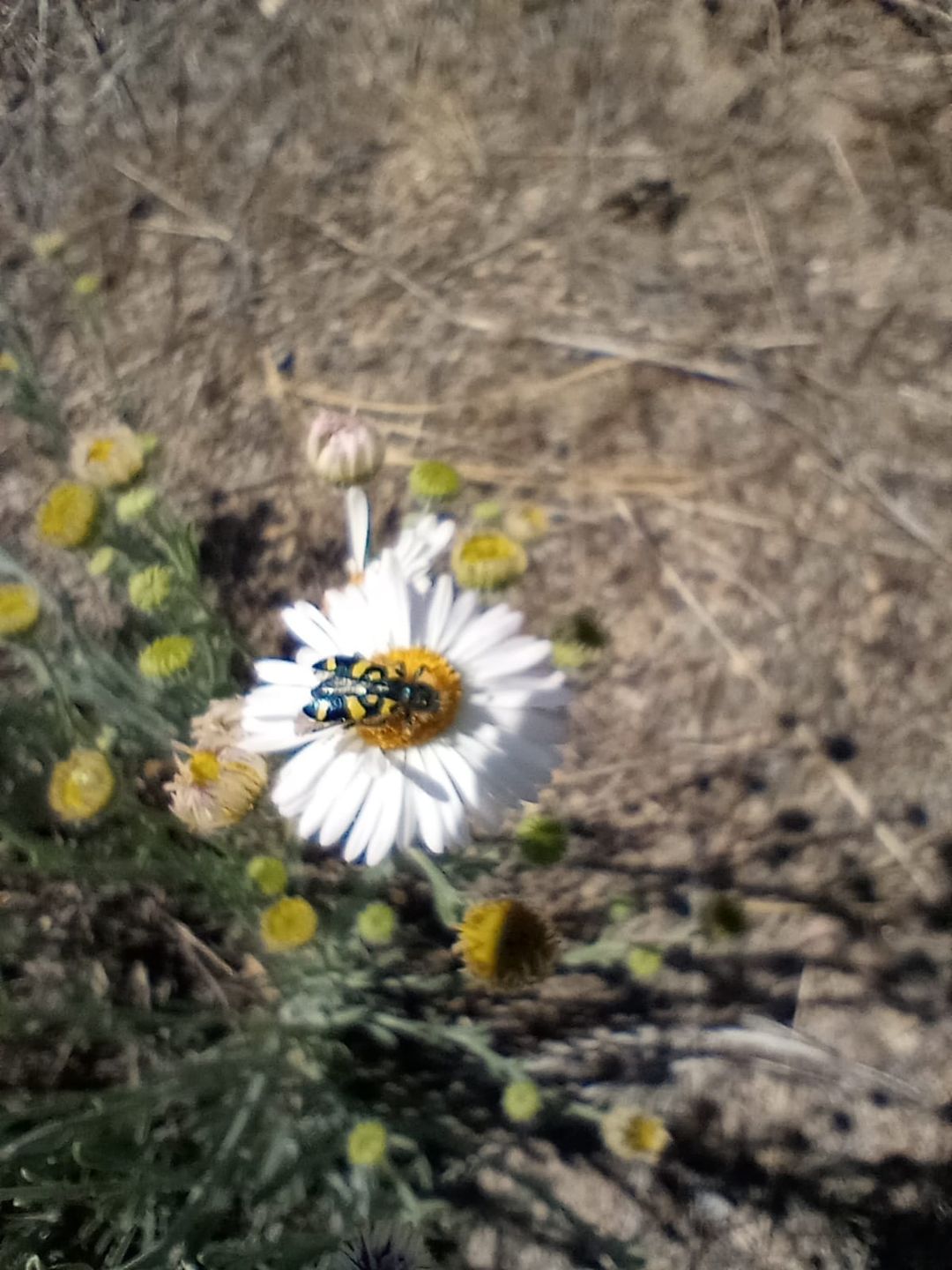
Another common flower being found among the grasses and bitterbrush shrubs of the steppe habitat are delicate and showy mariposa lilies. They are often called cat's ear for the fuzzy appearance of their petals, but you'll also notice the purple crescents where the flowers produce nectar to attract visiting insects.
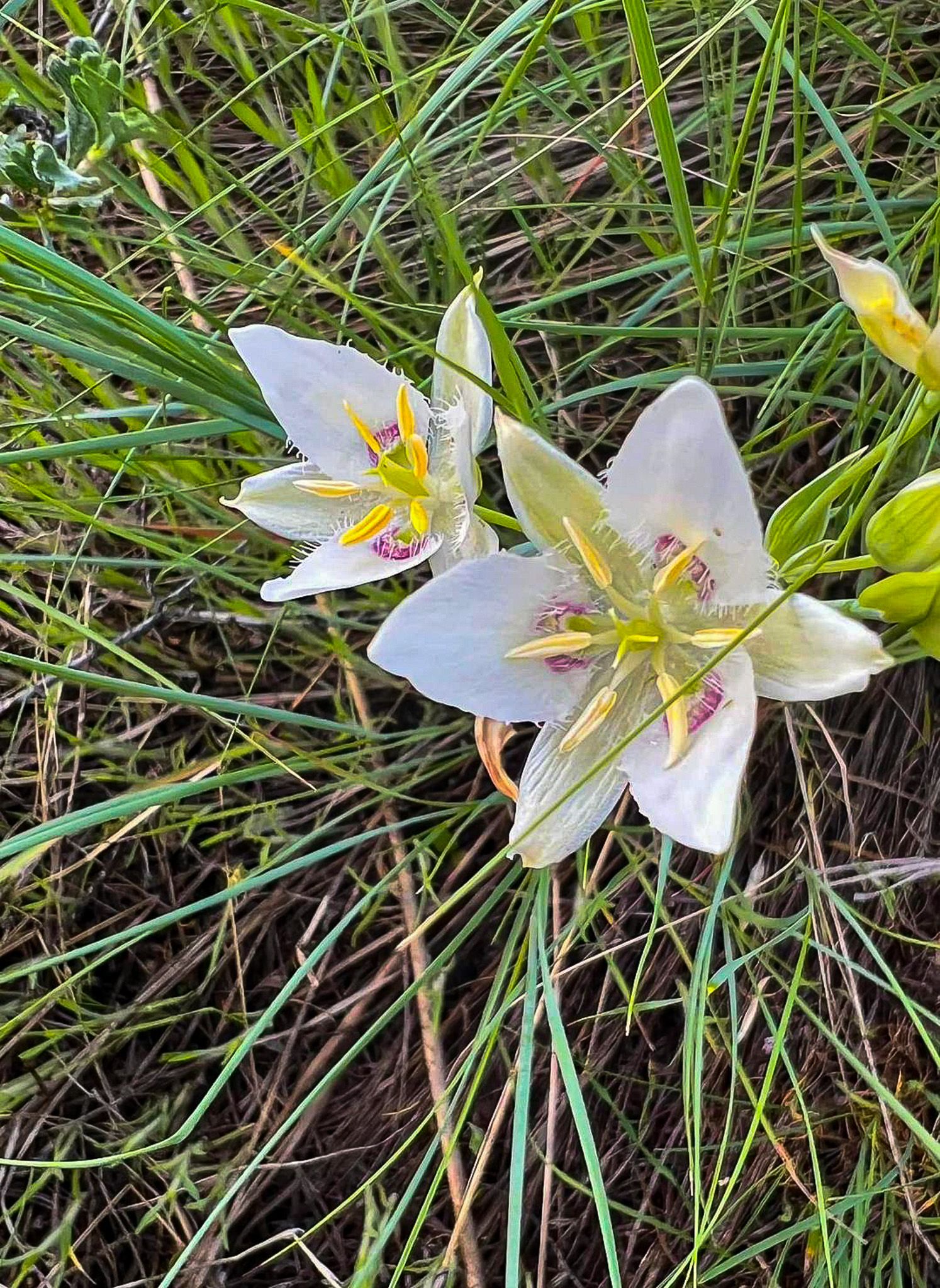
Driving Thompson Ridge Road this week I was astonished by the insane number of flowers carpeting the hillsides that were burned in the 2021 Cedar Creek Fire (see photo above). Burned forests are an important part of our local ecology and this will be the subject of a special issue of the newsletter in a couple days, but I was equally amazed by the numbers of flowers on Driveway Butte later in the week so it's just a great time for flowers everywhere.
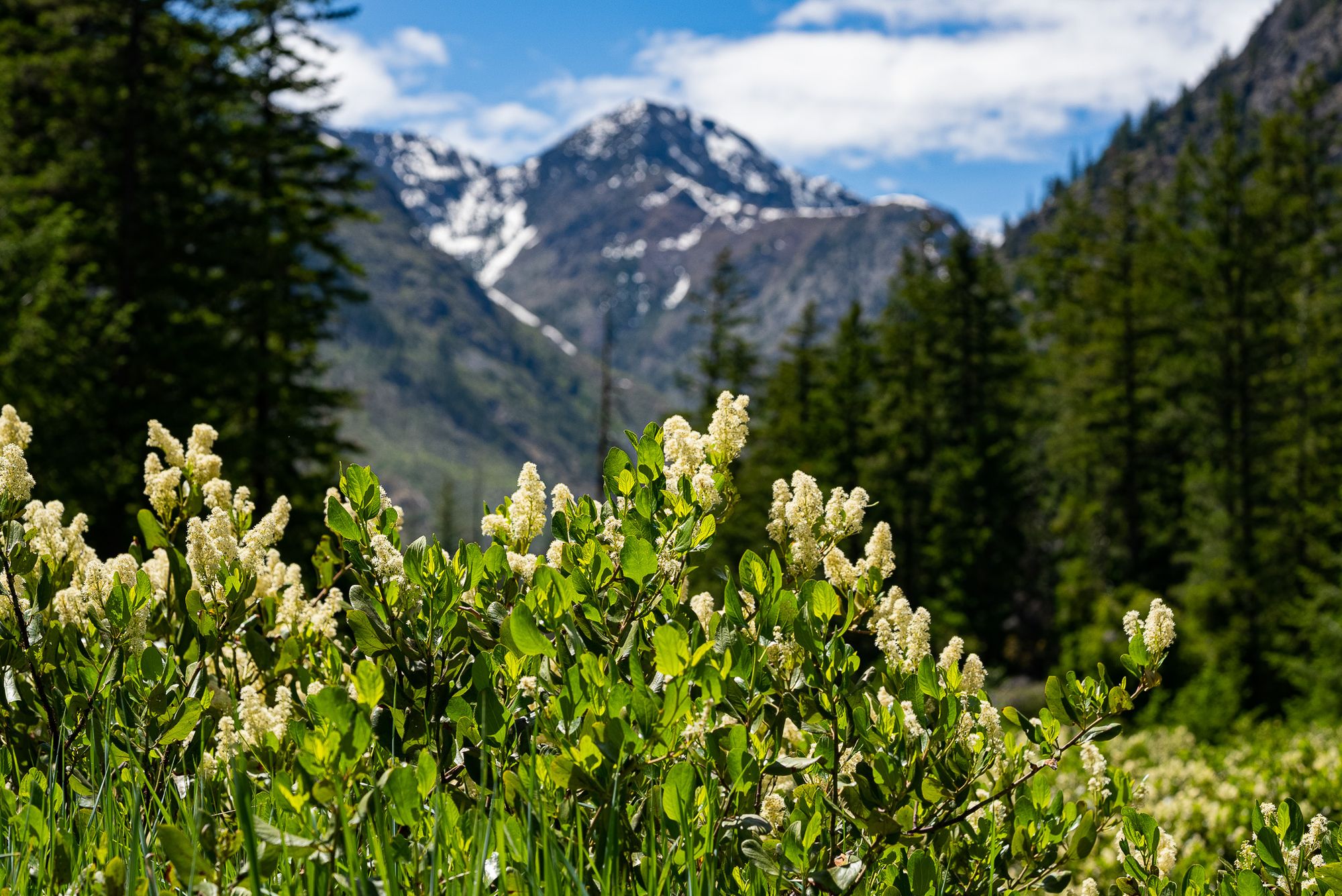
It's hard to miss the spicy smelling, creamy-white flowers of snowbrush, which are blooming like crazy in mid-elevation forests right now. These shrubs can be hard to walk through if you're not on a trail, but they play a critical role in capturing nitrogen in the air and adding it to the soil. Their flowers also attract lots of pollinators and they seem to be a favorite of our swallowtail butterflies.
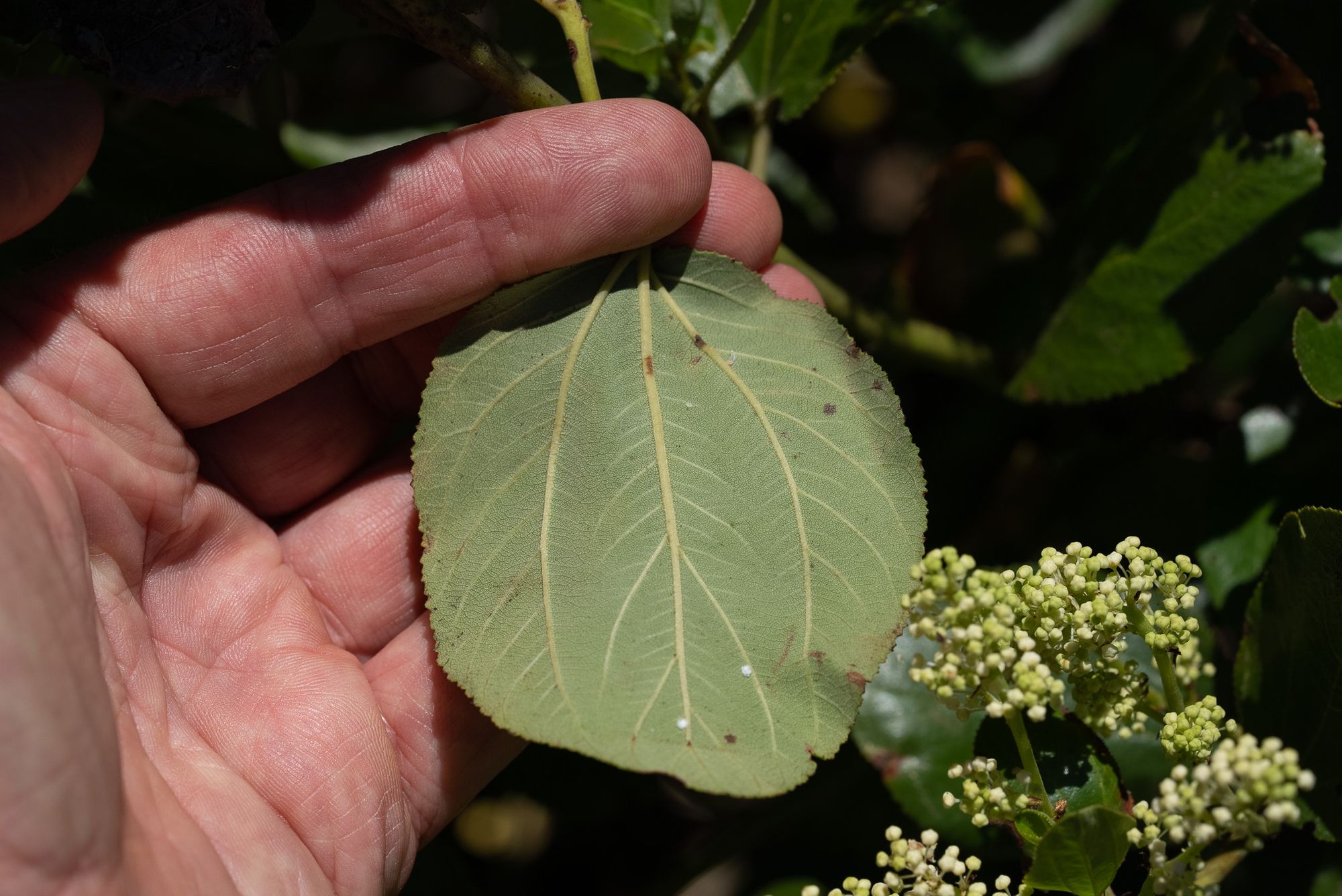
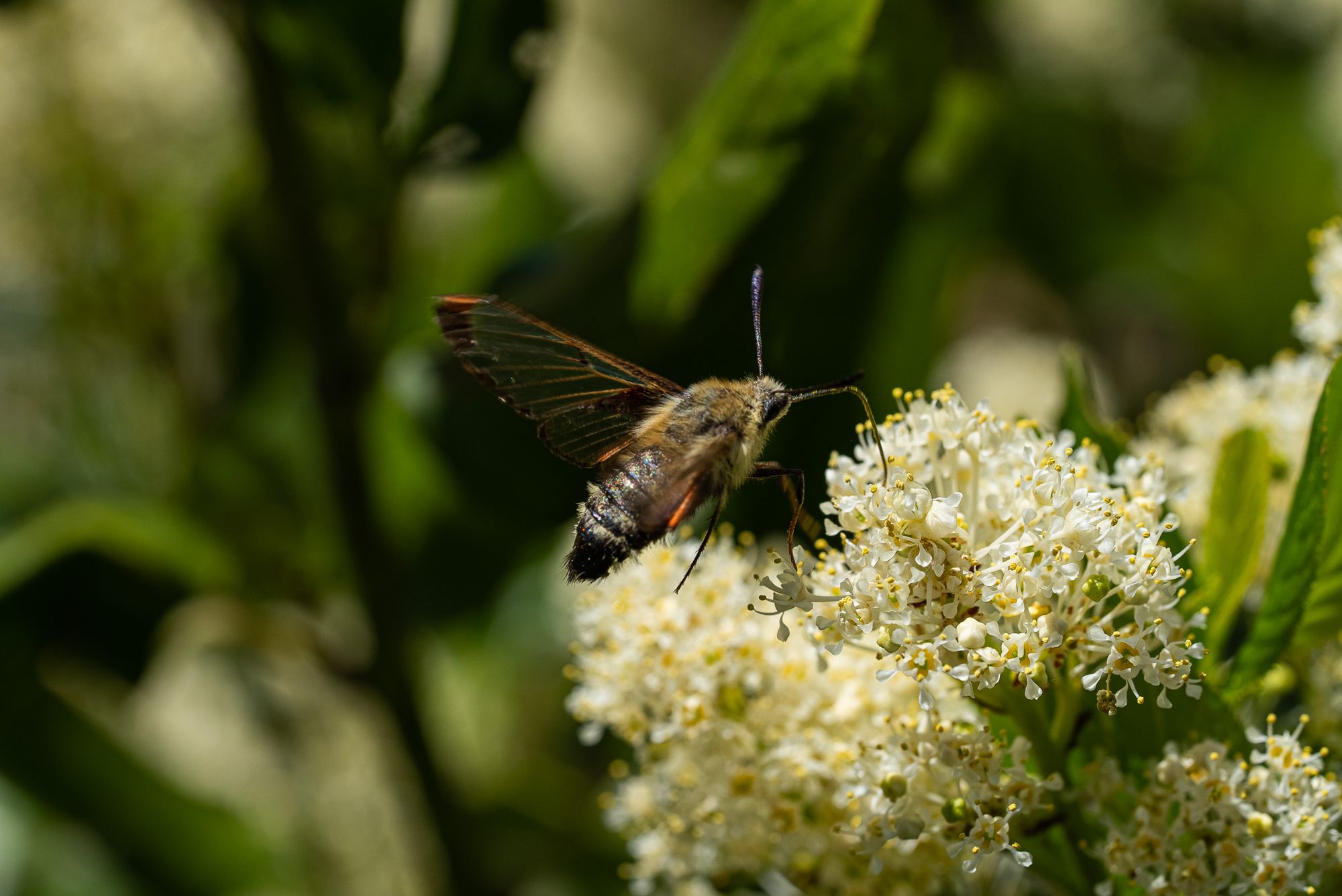
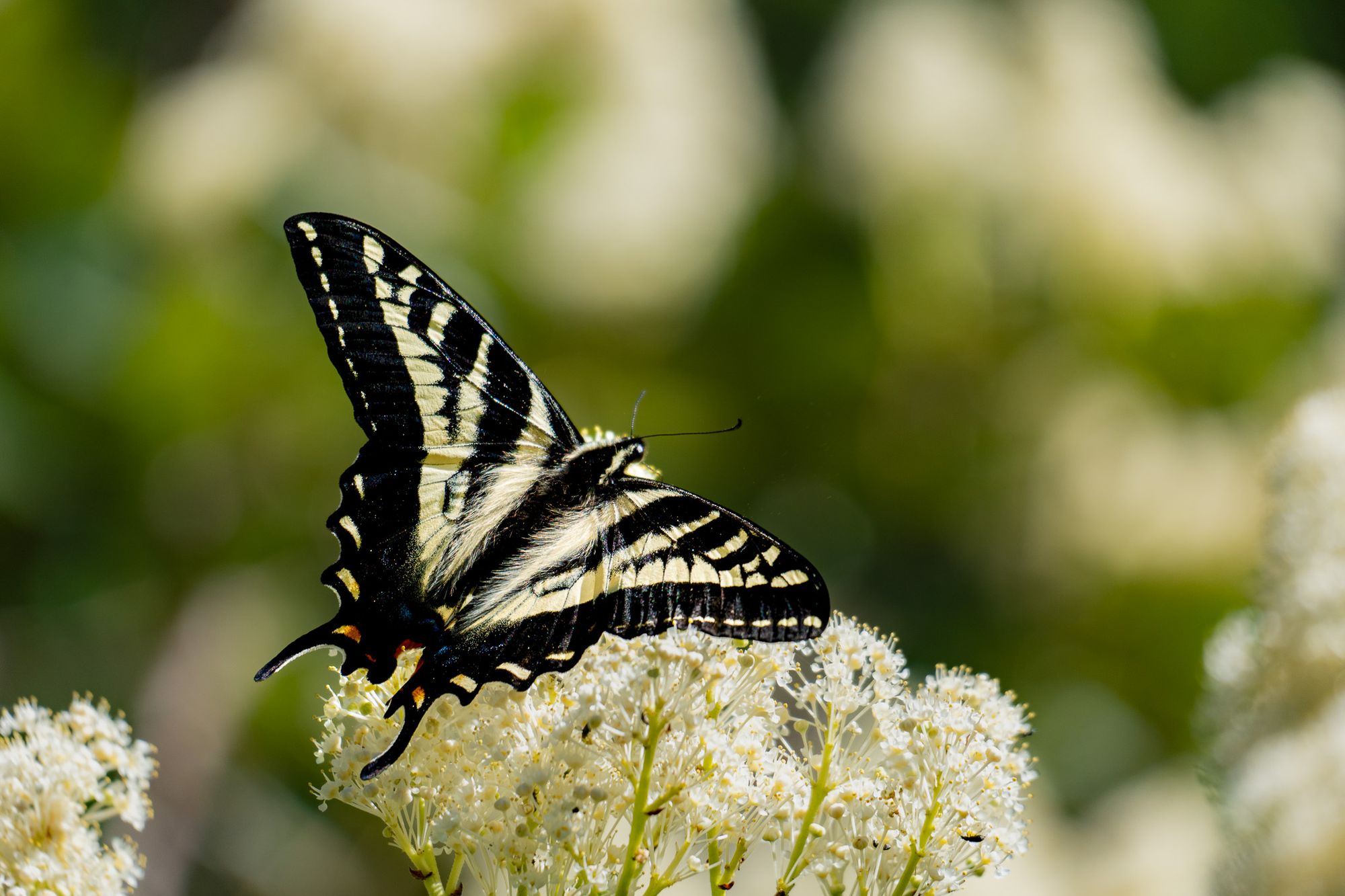
Some other fun observations this week include patches of mountain lady's-slipper, a remarkable and beautiful orchid that favors moist, shaded forests.
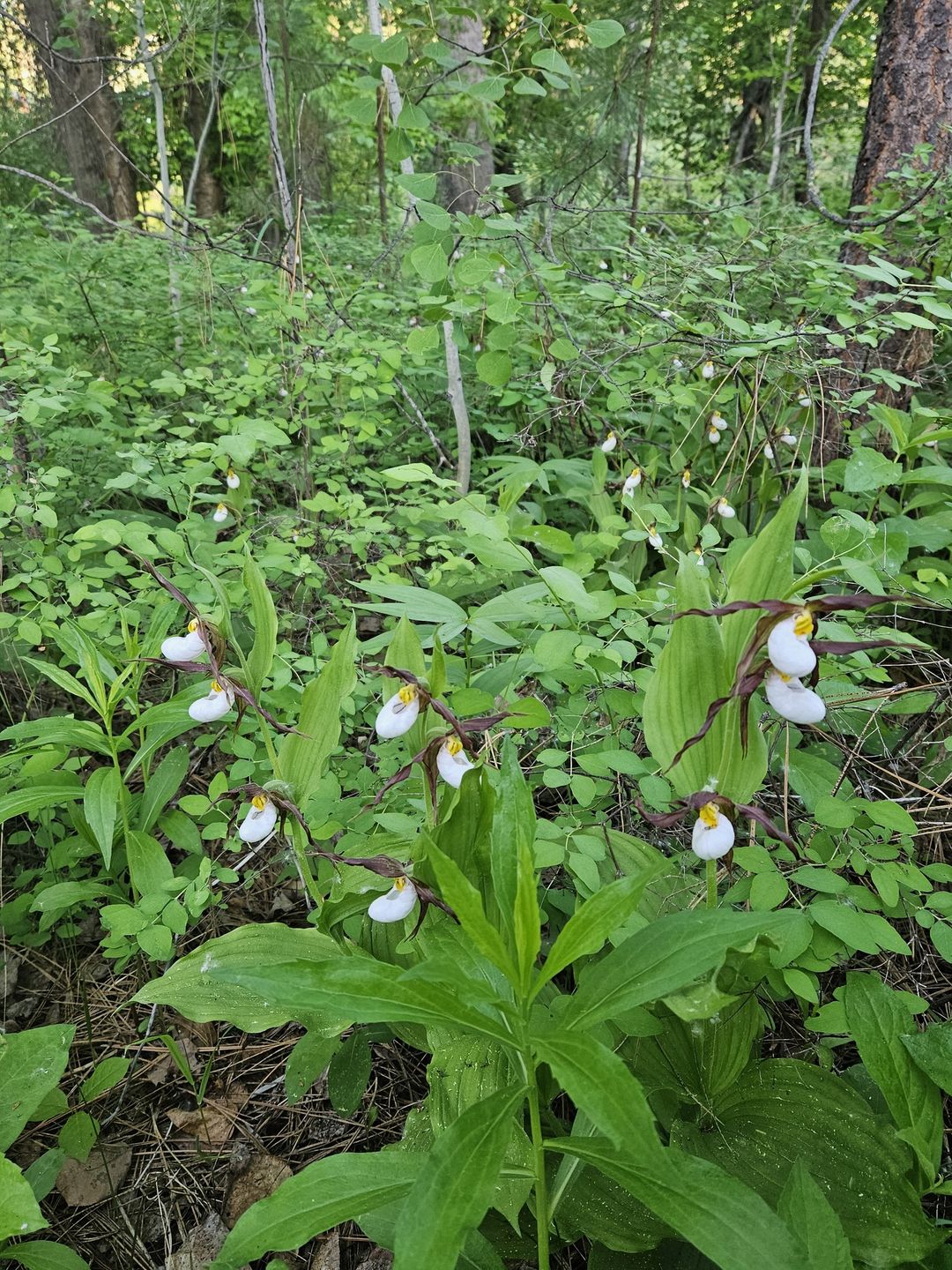
And here are a few other fun observations this week:
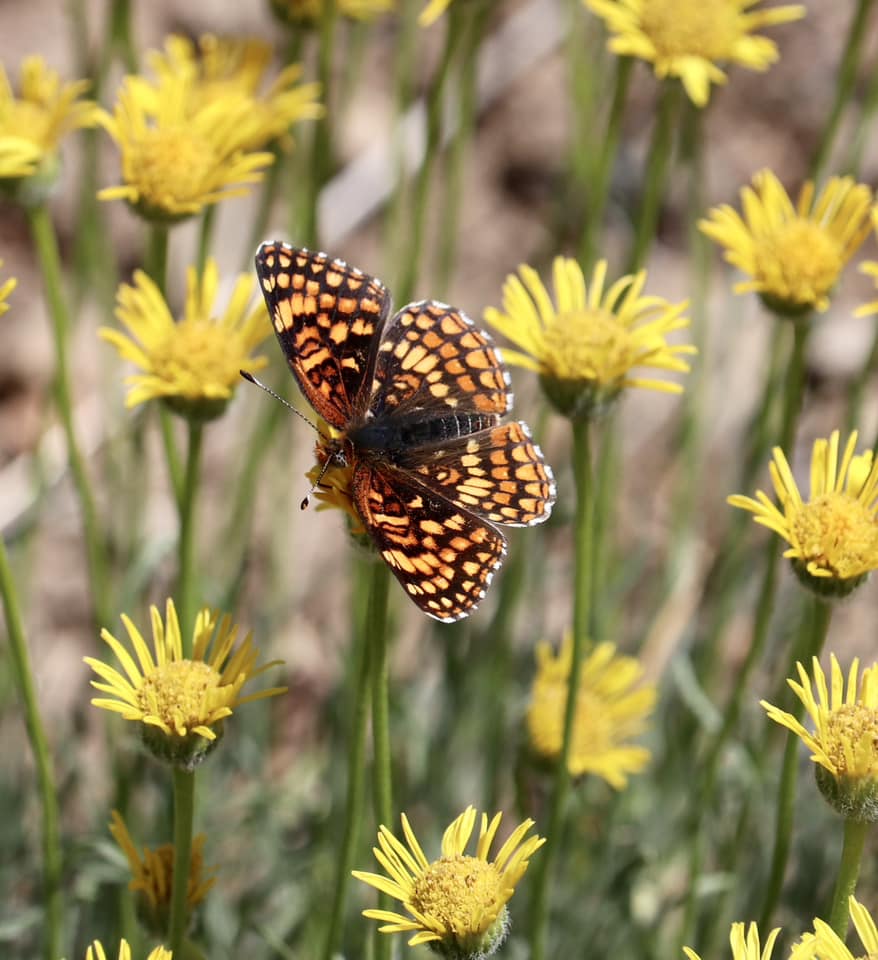
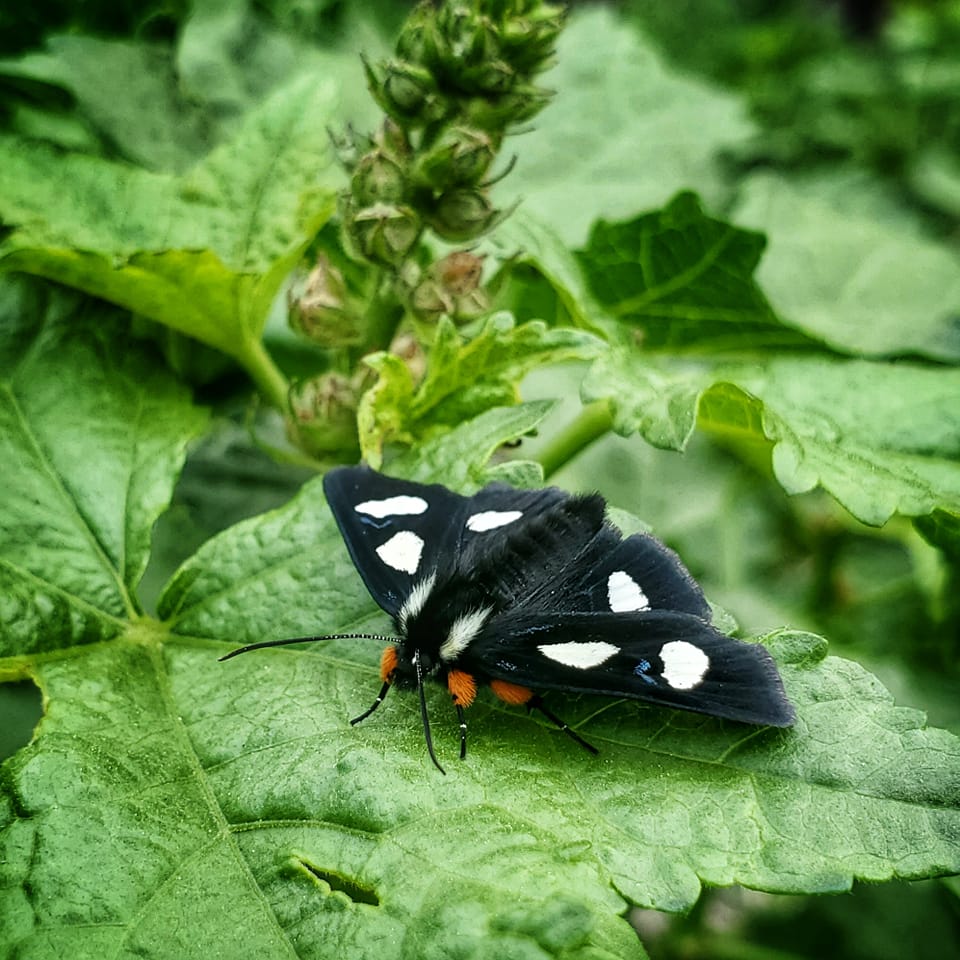
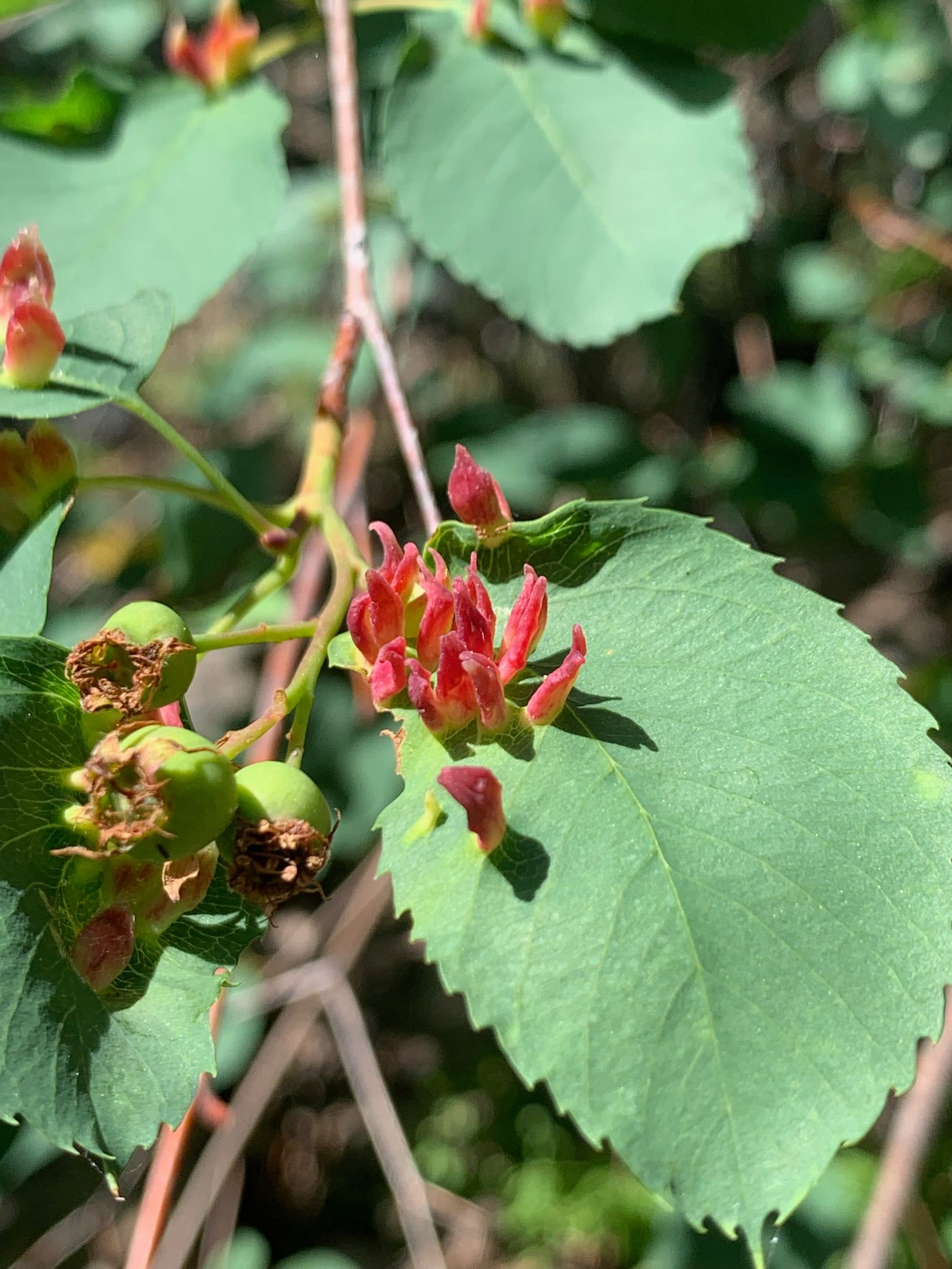
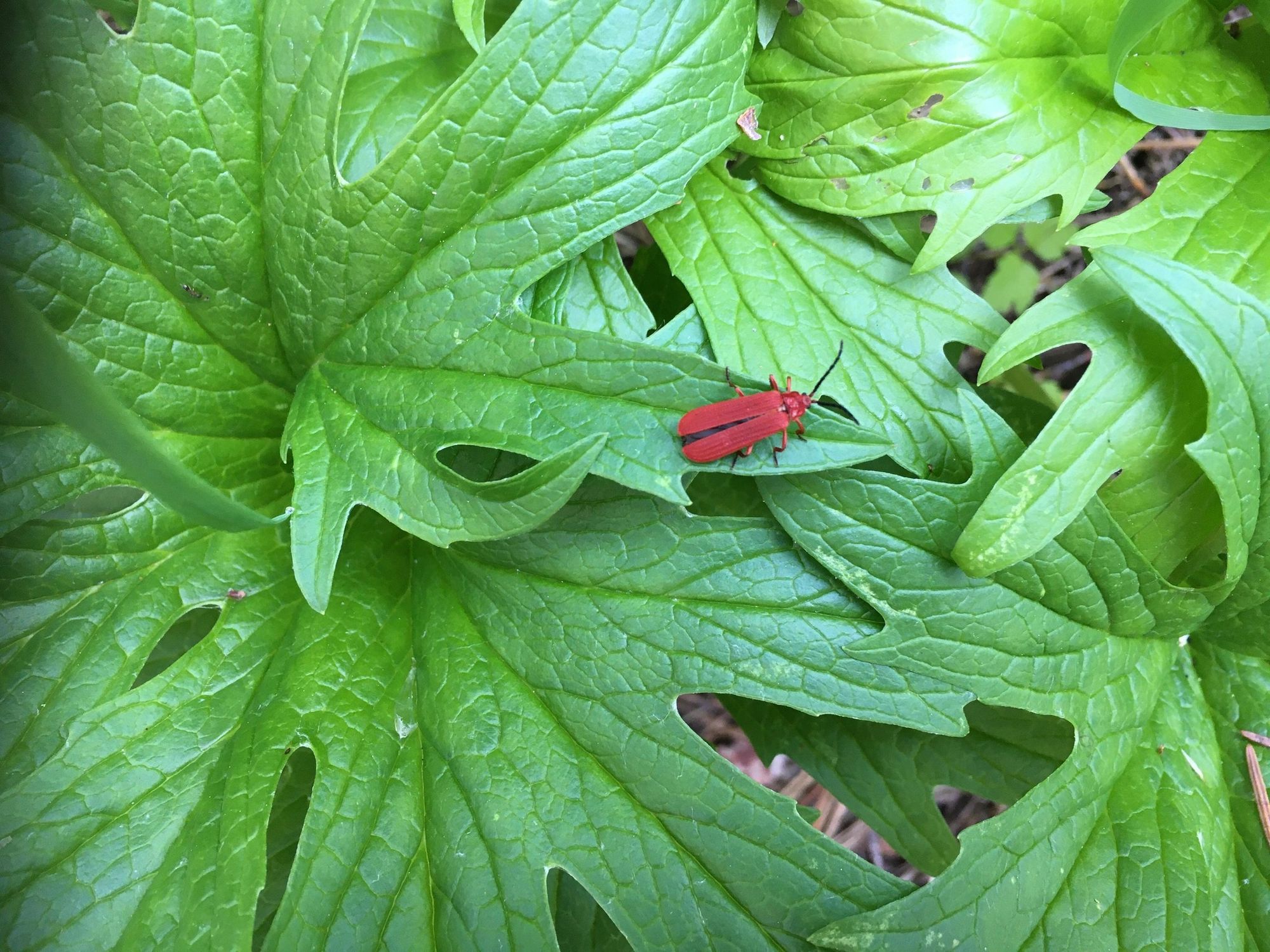
Observation of the Week: Bedazzled by Bluets
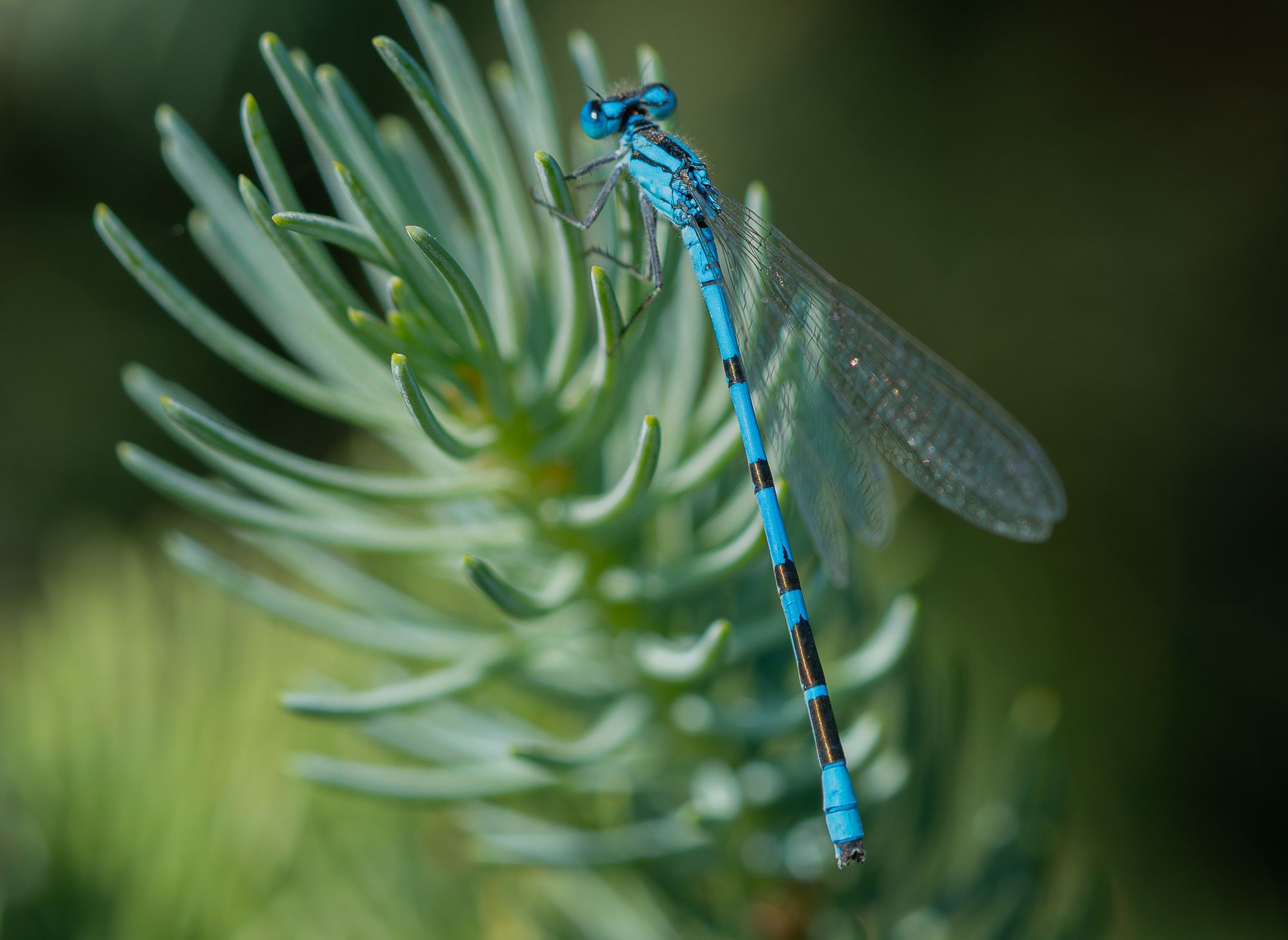
There is so much happening in the natural world right now that it's hard to know what to pick for this week's observation. But large numbers of blue damselflies are flying around and they have an amazing story so it's a great choice.
More than two dozen species of blue damselflies in the genus Enallagma are found in the American West. They are popularly known as "bluets" and they are very difficult to tell apart.
It's not clear which species occur in the Methow Valley, but based on the photos I've taken it looks like our most common ones might be northern or boreal bluets. These two species are notoriously difficult to separate (requiring microscopic examination by an expert) so they have the nickname "borthern" or "nobo" bluets.
Damselflies are often seen flying around the margins of lakes and ponds where they lay their eggs in the water, but you can easily find dozens at a time flying among bushes and yards all over the valley.
Look closely at a perching damselfly and see if you can spot tiny red dots (as in the picture below). These are the blood-sucking larvae of water mites that attach to damselfly larvae while they're still in the water. Then when the damselfly larvae emerge from the water as adults, the mites run to the base of the wings and hitch a ride as the damselfly flies away.
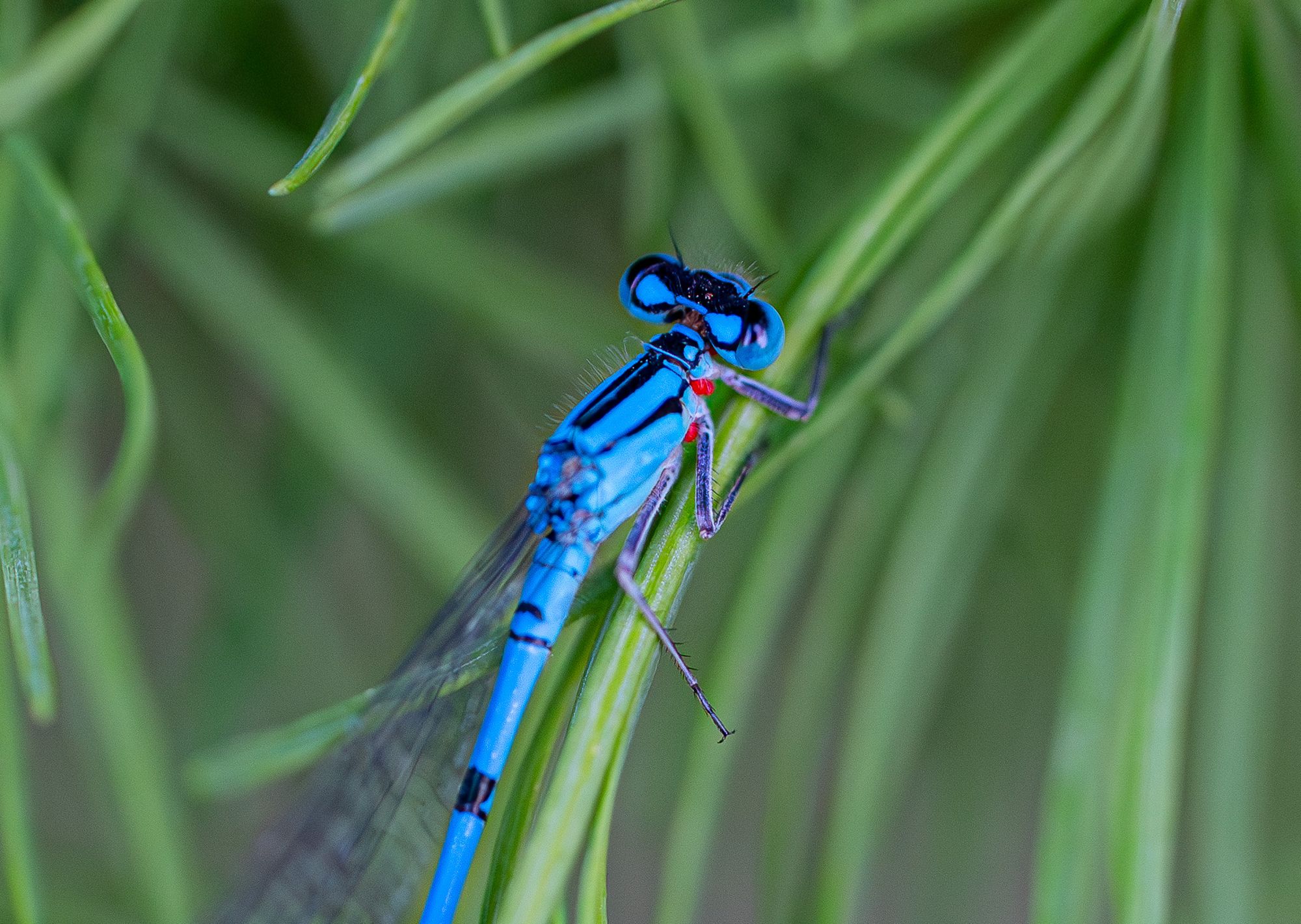
Mites hang onto adult damselflies while sucking their hemolymph (insect blood), then when the damselflies return to water to breed, the mites drop off into the water to complete their own life cycle. Once in the water, the larval mites enter into a short dormancy where they rebuild their tissues into a non-sexual adult form called the deutonymph, which will continue to grow and mature, then they enter a second period of dormancy before emerging as a sexual adult called a tritonymph.
More than 90% of all adult damselflies can be infested with these mites, but fortunately (except in extreme cases) these infestations don't seem to have a huge impact on the damselflies.
